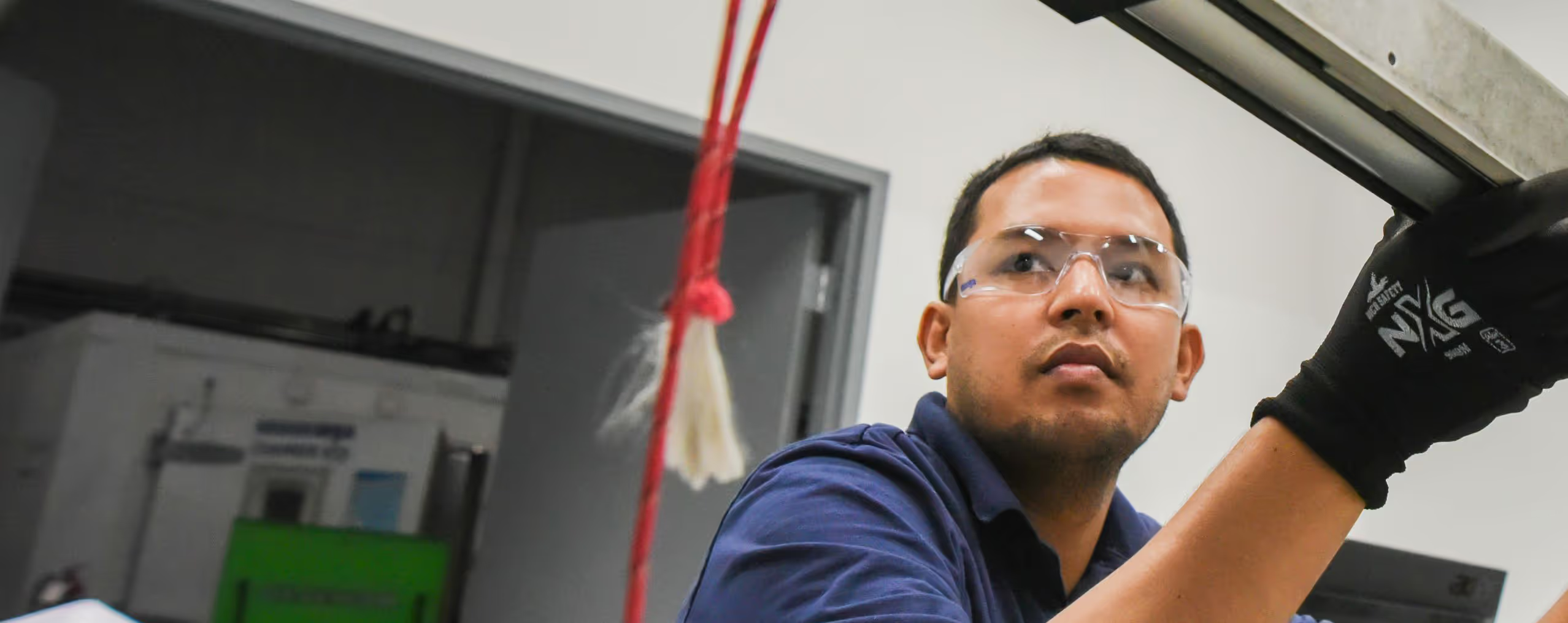
About
Since our founding in 1977, MGA has been dedicated to advancing safety and driving technological progress through our comprehensive testing services and innovative equipment solutions.

Driving Safety Through Innovation
At MGA, our mission is to advance safety and innovation through world-class testing services and equipment solutions. We envision a future where our expertise contributes to safer, more reliable products across automotive, aerospace, and defense industries. Our commitment to this vision drives us to constantly innovate, adapt, and exceed expectations in everything we do.
Our Locations
MGA operates a network of state-of-the-art facilities across North America to serve our clients' diverse needs.

Lincoln, AL
Located 45 miles east of Birmingham and 106 miles west of Atlanta, the Lincoln facility serves both the Automotive and Space/Defense industries. This location specializes in full vehicle crash testing, vehicle safety, automotive interiors/exteriors, and aerospace/defense testing, working seamlessly with other MGA labs to provide comprehensive testing solutions.

Hughson, CA
The Hughson facility supports automotive and aerospace development efforts throughout the West Coast. This location leads MGA's companywide pedestrian protection testing initiatives.

Ontario, Canada
MGA's first international facility is located in Mississauga, Ontario, just 20 miles from downtown Toronto and 7 miles from Toronto Pearson International Airport. The Ontario team supports the Canadian Automotive and Aerospace industries with capabilities ranging from component testing to full vehicle and aircraft analysis.

Michigan
The Michigan campus, situated in the heart of the automotive industry, consists of multiple labs in Troy and a dedicated battery test facility in Holly. Located 20 miles from downtown Detroit and 35 miles from Detroit International Airport, these facilities serve the Automotive and Battery industries while coordinating with other MGA labs to provide comprehensive testing solutions.

Akron, NY
The Akron location houses MGA's Fabrication Center, where all testing equipment and fixtures are manufactured. This facility is also home to the Technical Services Lab, supporting Space and Defense industry testing.

Greer, SC
Situated 16 miles east of Greenville and 3 miles from Greenville-Spartanburg International Airport, the South Carolina facility serves the southeast automotive corridor. This location supports OEMs and suppliers with comprehensive testing capabilities including seating, interiors, exteriors, vibration, and materials testing.

Irving, TX
The Irving facility, located 10 miles northwest of Dallas, serves as a hub for aircraft seating and interior testing, while also supporting local and Mexican automotive customers. This location's integration with MGA's laboratory network ensures rapid response to customer needs and timelines across the region.

Manassas, VA
The Manassas facility, located 30 miles southwest of Washington DC, specializes in Child Restraint Systems and pyrotechnic shock testing. This location serves as MGA's centralized hub for Military testing initiatives.

Burlington, WI
Located 65 miles northwest of Chicago and 40 miles southwest of Milwaukee, the Wisconsin facility specializes in automotive and battery testing. This location features full vehicle crash testing, automotive sled testing, battery abuse testing, commercial vehicle testing, and full vehicle durability testing on its proving grounds.
A Legacy of Innovation
For over four decades, MGA has been at the forefront of safety testing and equipment solutions. Our timeline highlights the key achievements and expansions that have made us a trusted partner in automotive, aerospace, and defense industries.

Ready to Get Started?
Let's discuss your testing needs and how MGA can help. Our team is ready to provide the expertise and solutions you're looking for.







